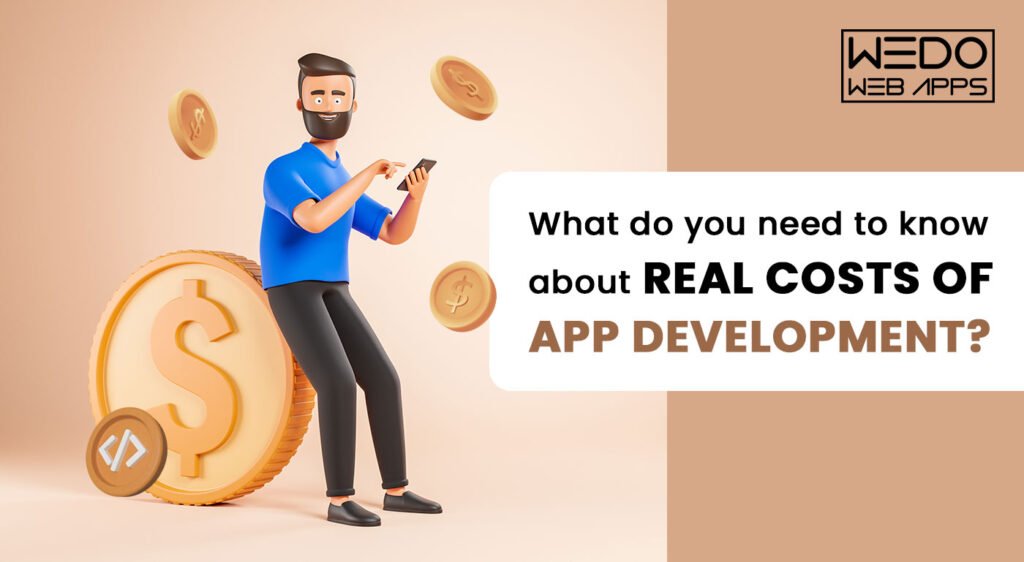What is App Development?
The app development process consists of developing software for mobile devices. A person who develops applications is referred to as an app developer. These individuals work on designing and implementing the applications. They can create different types of apps in different ways, including native app, web, and hybrid apps, and these developers are referred to as app developers.What is the Development Cost for an App?
An average app developer earns about $170,000 per project. But you might not get a price estimate from any mobile app development companies during the initial meeting. So before giving you a rough estimate, the developers need more information about your project. The top Australian companies usually spend $500k to $1 million on every mobile app project, and the most expensive apps cost up to $250,000. Businesses in Australia may spend $50,000 to $100,000 on a standard mobile app, while more complicated applications can cost up to $250,000. Many factors must be considered when creating an app, depending on your business objectives. Apart from the monetary costs, there will be costs in terms of time and labor that you will have to consider.App Development Costs: A Breakdown
App development costs are widely varied as they may appear at first, but you can break them down even further depending on the size and complexity of the app. For example,- The development cost of a simple proof-of-concept app can range from $25k to $50,000, depending on its features.
- The cost for a small app can range from $50,000 to $125,000.
- A medium size application will typically cost between $125,000 and $200,000 to develop, depending on how complex it is.
- If you want to build an extensive and feature-rich app, you will need to spend well over $200,000.
1. Server fees
In terms of cost, servers can range between 10 and 10,000 dollars per month, depending on how many users you have, how much data is being sent and received, and the type of services you are running. Several hosting companies offer free tiers, including Amazon AWS and Heroku, for customers just starting. Free hosting may work for some apps, but a free tier will only work for a short time.2. Developer Accounts
For your app to be released on the app stores of Apple and/or Android, you will need to subscribe to the developer programs of those companies. For example, the Android developer program requires a one-time fee of $20 to become a Google developer, while the Apple developer program requires an annual fee of $100.3. Security and Other Maintenance Costs
As a result of frequent security updates, mobile apps can also become more expensive. In addition, as technology evolves rapidly, mobile apps require constant maintenance. It is a never-ending process. When you create your budget and timeline, you should allocate about 50% of the initial cost of your project to security and maintenance. Aside from basic maintenance costs, you can also make changes to your app based on user feedback and usage data. It is entirely up to you to decide how much you wish to spend on the app's development based on the changes you want.4. Testing and Quality Assurance
If you are launching a new app, take your time to test it thoroughly. Ensure you confirm all technical features are working flawlessly and that the user feedback is positive when you launch your app. There is no need to be afraid of quality assurance costs. The reality is that they don't have to break the bank. On the contrary, quality assurance inspections can reduce the cost of the launch by identifying potential issues before the launch and avoiding complications after the launch. A pre-launch usability test can go a long way to ensuring that users have an exceptional experience after the application launch, while also helping to prevent the possibility of costly future problems.5. Third-party Services
Third-party integration can also add to the complexity of the application. Mobile application developers need to spend additional time testing third-party features and integrating them into their apps, increasing their time and costs. For example, suppose you want to integrate data or features from social media sites, analytical tools, or eCommerce payment platforms into your mobile app. In that case, you have to communicate with third-party APIs. Other apps may rely on hardware resources, such as GPS on a mobile phone, which requires communication with third-party APIs. Limiting external integrations as much as possible is essential to decreasing the cost of developing a mobile application. When creating an app, look for solutions that streamline the development process. Don't include third-party features that won't be of any value to your end users.
Factors impacting the development cost of an app
When it comes to determining the cost of developing an app in 2023, countless factors come into play, the most notable among them being the following.1. Type of App
The app type is the most significant factor impacting development costs. For instance, a QR code scanner app will be much cheaper to develop than a comprehensive social network app. Due to this, it is necessary to consider the number of screens, the types of users, the architecture, and third-party services, which will greatly impact the kind of app.- Higher cost apps
- Lower-cost apps
2. Features
Development expenses are also heavily influenced by the number and complexity of features. It may take less time and money for more straightforward and smaller apps to be developed and released; however, if you intend to incorporate advanced features, development time and cost may increase significantly. Therefore, it is very significant to determine clearly:- What are the anticipated features of the product?
- What is the complexity of the application's business logic?
- Number of screens, buttons, and features will the mobile app have?
3. Platforms Supported
Developing iOS and Android apps require different programming languages. This is why it takes much more time and money to build an app that supports both platforms than just one, unless you choose hybrid technology. For example, native apps are specially crafted for an operating system, such as iOS or Android. On the other hand, a hybrid app might be more suitable for your project if you want wider compatibility, since it has a unified codebase that's compatible with any operating system. Nevertheless, you must take into consideration the publishing costs associated with either of these operating systems: Android: Google charges a one-time fee of $25 for uploading your app and a 30% commission from sales made through the app. IOS: As part of the Apple developer program, Apple charges an annual fee of $USD99/membership for members to join the program, plus 30% of any purchases made through the application.4. Level of Polish
Polish is essential in every aspect of an application, which has a substantial impact on development costs. It is possible to apply polish to every part of an application. The user interface (UI) design, server architecture, animations, and interactions are standard levels. As polish is added to an application, the cost will increase. A typical app will undergo several development phases, adding more polish at each stage. As a result, few apps will be fully functional and highly polished when they are released to the public for the first time." For most startups, the first release will be a proof-of-concept application. This is a cost-effective, basic version of the app used to validate an idea. This allows the startup to determine whether there is a market for the application before investing more money in it. The following are some typical app lifecycle phases. As you progress through the stages, the cost of development will increase:- Design Prototype
- Proof-of-concept
- MVP
- Scalable V2
- Fully featured app
Average Cost of App Development in Australia
- A small-sized app, consisting of only 5–8 screens, is designed for a single platform with limited integration. It goes into development by spending less than $200k on a team of developers.
- A medium-sized app with 10–15 screens that can be used across multiple platforms and is easily integrated costs approximately $200k to $600k.
- A large-sized app with more than 20 screens and supporting multiple personas with native functionality, multi-platform compatibility, and complex integration into existing systems can cost more than $1 million in Australia.



